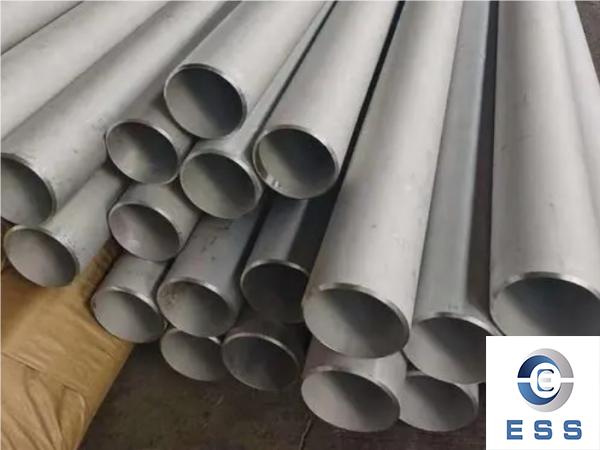The differences between smls pipes with different manufacturing process
What is smls pipe?
Seamless steel pipes are made of a whole round steel perforated. Steel pipes with no welds on the surface are called seamless steel pipes. According to the production method, seamless steel pipes can be divided into hot-rolled seamless steel pipes, cold-rolled seamless steel pipes, cold-drawn seamless steel pipes, extruded seamless steel pipes, jacked pipes, etc. According to the cross-sectional shape, seamless steel pipes are divided into two types: round and special-shaped. Special-shaped pipes have various complex shapes such as square, oval, triangle, hexagon, melon-shaped, star-shaped, and finned pipes. The maximum diameter is 900mm and the minimum diameter is 4mm. According to different uses, there are thick-walled seamless steel pipes and thin-walled seamless steel pipes. Seamless steel pipes are mainly used as petroleum geological drilling pipes, cracking pipes for petrochemical industry, boiler pipes, bearing pipes, and high-precision structural steel pipes for automobiles, tractors, and aviation.

Seamless steel pipe has the following characteristics:
1. High strength: Seamless steel pipe has good mechanical properties, high strength and can withstand greater pressure.
2. Accurate dimensions: Seamless steel pipes have accurate dimensions, and pipes of various specifications can be customized according to user needs.
3. Smooth inner and outer walls: Seamless steel pipes have smooth inner and outer walls and are suitable for transporting high-viscosity liquids and granular materials.
4. Complex process: The manufacturing process of seamless steel pipes includes multiple process links such as continuous casting, rolling, pickling, hot rolling, and cold rolling.
How to make steel pipes seamless?
This product uses high-quality coiled plates. After passing the re-inspection, it is slit or rolled into coils for automatic forming and welding. While the computer controls the optimal fusion temperature, the inner and outer burrs of the steel pipe are removed. Steel pipes that pass the non-destructive test are rarely oxidized. The entire steel pipe is heated to 910°C-950°C and released from the furnace. It is descaled and rolled through a tension reducer in multiple passes to make the metallographic structure, grain state, geometric size and mechanical properties of the steel pipe uniform throughout.
Products comply with API SPEC 5L, API SPEC 5CT, and EN10217 standards. This product is widely used in flammable and non-flammable fluid transportation pipelines, boilers, and steel structures. It is also called hot-rolled seamless steel pipe or hot-rolled steel pipe.
Its production process makes the steel pipe seamless mainly through tension and diameter reduction. The tension and diameter reduction process is a continuous rolling process of the hollow base material without a mandrel. Under the condition of ensuring the welding quality of the parent pipe, the welded pipe expansion and reduction process is to heat the entire welded pipe to more than 950 degrees Celsius, and then roll it through the expansion and reduction machine (the expansion and reduction machine has 24 passes) into various outer shapes. The finished pipe has a diameter and wall thickness. The hot-rolled steel pipe produced by this process is substantially different from the ordinary high-frequency welded pipe. After being heated in the heating furnace, the metallographic structure and mechanical properties of the weld and the parent body can be completely consistent. In addition , through multi-pass tension reducer rolling and automatic control, the dimensional accuracy of the steel pipe (especially the pipe body roundness and wall thickness accuracy) is superior to similar seamless pipes.
This type of steel pipe has the following characteristics:
1. Corrosion resistance: Seamless treatment can form a uniform and dense seamless protective film to effectively resist corrosion and oxidation on the surface of the steel pipe.
2. Oxidation resistance: Seamless treatment can reduce the contact area between the steel pipe and the air, thereby reducing the oxidation reaction and extending the service life of the steel pipe.
3. Good smoothness: Seamless processing can make the surface of the steel pipe smoother, reduce the resistance of fluid in the pipe, and improve the efficiency of fluid transportation.
4. Wide range of applications: Seamless steel pipes are widely used in petroleum, chemical industry, shipbuilding, electric power and other industries, and are suitable for transporting high temperature, high pressure and corrosive media.
What's the difference between the two of them?
1. Difference in manufacturing process: It chemically or mechanically treats the base of the seamless steel pipe to form a protective film; while the seamless steel pipe is formed by heating the steel billet and passing it through the mold.
2. Differences in characteristics: Its characteristics are mainly reflected in corrosion resistance, oxidation resistance, smoothness, etc.; the characteristics of seamless steel pipes are mainly reflected in high strength, accurate size, smoothness, etc.
3. Different application areas: It is widely used in petroleum, chemical industry, shipbuilding and other industries, and is suitable for transporting high temperature, high pressure, corrosive media; seamless steel pipe is widely used in petroleum, natural gas, chemical industry, machinery and other industries.
It should be noted that they are not completely independent concepts. Another steel pipe can be regarded as a processing method for seamless steel pipes in the manufacturing process to improve the corrosion resistance and oxidation resistance of steel pipes. When selecting steel pipes, you need to decide which type of steel pipe to use based on specific application requirements.













 Eastern Steel Manufacturing Co.,Ltd not only improve product production and sales services, but also provide additional value-added services. As long as you need, we can complete your specific needs together.
Eastern Steel Manufacturing Co.,Ltd not only improve product production and sales services, but also provide additional value-added services. As long as you need, we can complete your specific needs together.










